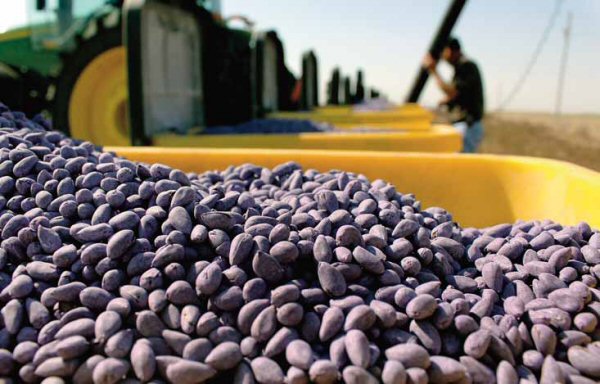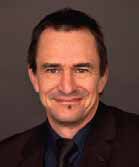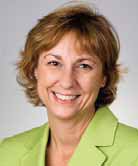SEJournal Online is the digital news magazine of the Society of Environmental Journalists. Learn more about SEJournal Online, including submission, subscription and advertising information.
Feature
By MADELINE BODIN
 |
|
Many Harvest Public Media reporters do their own photography as well. Eric Durban covered Kansas farmers switching crops from corn to cotton, because of the fiber’s somewhat lesser demand for water. Photo © Eric Durban, Harvest Public Media.
|
On the first Monday in May, Frank Morris, Harvest Public Media’s managing supervisor, heard that just across town from his office at KCUR, a National Public Radio affiliate, the Kansas City Star had laid off two dozen employees. It was the 10th round of layoffs for that paper in two years.
The region’s newspapers once fed the nation food and agribusiness news. The Star even won a Pulitzer Prize in 2001 for its coverage of the U.S. Department of Agriculture. In contrast, Morris saw surging interest in food issues, popularized by Michael Pollan’s books The Omnivore’s Dilemma and In Defense of Food, as well as recent movies, such as Food, Inc.
 |
|
Frank Morris, Editor.
Photo © Harvest Public Media. |
What’s more, Morris was about to add a seventh member to his new and growing reporting team at Harvest Public Media. “It has been great to be in expansion mode, both because of the folks that are available, and the needs and appetite for coverage,” he says.
Harvest Public Media’s mission is to fill that gap being left by the shrinking mainstream media. It reports on “food, fuel, and field” with stories on subjects as diverse as a program that helps combat veterans become farmers, raw milk cheese, the impact of an oil pipeline on farms, school lunches, and cellulosic ethanol. It is one of seven Local Journalism Centers created by the Corporation for Public Broadcasting in the past two years.
The Corporation for Public Broadcasting (CPB) saw the void in local news too, and recognized that it was a nationwide phenomenon, said Kathy Merritt, senior director of program investments for radio at CPB. “We looked at that and said, ‘how can public media fill in to provide good, local news coverage?’”
CPB also wants to encourage public radio and television stations to get better use of their resources by collaborating, Merritt said.
Its solution was to fund seven Local Journalism Centers that would allow teams of skilled journalists to focus on issues of regional importance, producing multimedia reports in collaboration with a small group of local public media stations.
When Morris’s boss put a brochure on his desk with the CPB’s grant proposal request, Morris already knew that agribusiness was the issue he wanted to focus on. He reached out to colleagues at other public media stations who shared his interest.
Harvest’s six participating public media stations span America’s breadbasket. They are KCUR, a public radio station in Kansas City; KBIA in Columbia, Mo.; Kansas Public Radio; Iowa Public Radio; NET, public radio and television in Nebraska; and High Plains Public Radio, which is based in western Kansas, but also serves eastern Colorado, and the Texas and Oklahoma panhandles.
KCUR in Kansas City, Mo. was well situated to be the hub of coverage on this topic, Morris says. Not only is it in the Corn Belt, but it is also in the center of the region’s agricultural research efforts, which include a Monsanto research facility near St. Louis, animal health research facilities in St. Louis, Kansas City, and Ames, Iowa, as well as USDA research facilities in Ames.
“When we looked at Harvest, it was a good alignment of stations in an area of the country that gets overlooked sometimes,” Merritt said. “We thought we would really like this group of stations in the middle of the country to collaborate. And frankly, the topic was really interesting.”
Harvest was one of the first LJCs funded, and while it originally presented its focus as simply “agribusiness,” Merritt impressed the CPB as a compelling case for stepping up coverage of that subject. “It’s about the food we eat. It’s about fuel,” she said. “The topic area leapt out at us as having resonance regionally as well as nationally.”
 |
|
Donna Vestal, Editor.
Photo © Harvest Public Media. |
Harvest’s first hire, editor Donna Vestal, is an example of the forces at work behind the organization’s founding. Vestal had been a business editor for 18 years and once worked for a fruit and vegetable industry trade publication. She had been laid off from the Kansas City Star just months before being hired by Harvest last July.
By autumn, a reporting team was in place, filing stories.“Right away we have a tremendously committed team who can’t get enough of this topic,” Vestal said.
With their wealth of experience covering agriculture, Vestal and Morris knew that one of the biggest challenges their new organization faced was credibility. “In talking with farmers, I found that they thought there wasn’t a lot of completely credible reporting on agriculture,” Morris said. The farmers thought that agribusiness was manipulating coverage in the farm press with its advertising, while they saw the mainstream media’s championing of small, organic farms as out of touch with the realities of American agriculture.
“The people who have opinions in these matters hold those opinions strongly, as they should,” Vestal said. “Trying to step into those tricky issues has been a lot of fun for the reporters, but it is also a huge challenge.”
Harvest has risen to that challenge. In April, Harvest reporter Jessica Naudziunas won a 2011 Regional Edward R. Murrow Award for hard news audio reporting in small market radio for her piece “In Missouri’s Bootheel, Black Farmers Wait on Unfulfilled Promises.” Also in April, reporter Clay Masters swept the Great Plains AP Broadcasters Awards for noncommercial agriculture coverage, with pieces that were awarded first, second, and third place. “Those were the first three big pieces he did for us,” Vestal said.
“I think they are doing great work,” Merritt added. “Their reporting has been picked up by NPR, the PBS Newshour, and a number of newspapers. They are serving the audience at the partner stations, but they are going beyond that. We are really pleased to see that happen.”
Funds for the grant were awarded to CPB in previous federal budget years, so federal budget cuts won’t affect the program, Merritt said. But the grant will pay only for LJC’s first two years of operation. Harvest’s next challenge is to find funding so that operations can continue when the CPB grant runs out next year.
Already foundations and other potential funders have approached the organization. Harvest is proceeding cautiously, however. “We have to be really careful of the perception of who is providing funding for this effort,” Vestal said.
“It’s not just a money thing,” Morris added. “The structure of the organization is going to have to change.” The first step the group will take to address the funding issue is to develop an ethics or editorial policy that will make their role as a news-gathering organization transparent to the public.
Another grant, from American Public Media, one of the largest producers of public radio programming in the world, will bring Harvest into the Public Insight Network, which is sort of a cross between Help A Reporter Out (HARO) and Facebook, organizing over 100,000 people who have volunteered as sources. The full-time staffer, hired in May, will manage Harvest’s interaction with this “social network on steroids,” that can be used to develop stories from a grassroots level.
In spite of the growth over the last year, Vestal said the organization has just begun to blossom. “We are still really little,” she says, citing the group’s 450 Facebook fans. “We didn’t want to go out to build our audience without a body of work, and now we have that. It’s time to reach out.”
Madeline Bodin is a freelance journalist who writes about wildlife conservation and other environmental topics. She can be reached at MadelineBodin+SEJ@gmail.com.
SIDEBAR
LJC grants fund more environmental coverage
Two additional Local Journalism Center grants were awarded earlier this year to bring the total number of LJCs funded by CPB to seven. One of those grants was awarded to a group of seven public media stations in Oregon, Washington,and Idaho that plans to develop a news unit that looks at regional stories through the lens of the environment, said Morgan Holm, vice president of news and public affairs for Oregon Public Broadcasting.
At press time, the unit had hired reporters for seven of its eight new positions, all of which were advertised as online journalism jobs. However, the group did not yet have a name. Holm said the unit will focus on sustainability, pollution/toxics, natural resources, energy, and science and research. He expects a formal launch in the fall.
* From the quarterly newsletter SEJournal, Summer 2011 issue.











 Advertisement
Advertisement 



